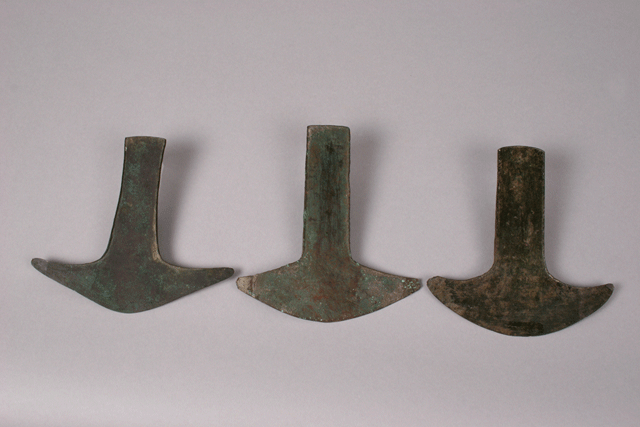

36.14.289, 36.14.290, 36.14.291, three axes
Copper or Bronze
Southern Mexico (A.D. 600–1550)
Ferdon-Hollenbech collection
Photograph by B. Bernard
These three axes are so thin that it is probably a mistake to think of
them as functional. Instead, they may represent a different kind of
"tool," money. The forms of money varies from culture to culture,
and many peoples never saw the need to develop any form of money.
In this case, however, a rare material (copper or bronze) in a
fairly standard shape provides a medium for exchange. The axes
could instead represent items made for purely ceremonial purposes,
for example as offerings. Each is about 15 centimeters (6 inches)
long.
"Maarten Jansen reports that one version of the Popol Vuh, a Mayan creation story, involves a copper axe holding up the sky. A copper axe given as an offering or tribute had more symbolic value than functional value, such as for woodcutting.
These axes are made of copper or bronze, which is a harder form of copper with tin or arsenic added. They were made by heating the metal until it melted, then pouring it into molds and hammering it thinner once it cooled. For more information about these objects, we recommend a book by D. Hosler.
To return to the thumbnail, please click here.
All content copyright © Maxwell Museum of Anthropology, University of New Mexico. A high-resolution verson of this photograph may be ordered from the Maxwell Museum's photo archives. Please make note of the catalogue number. For more information please visit the photo archives web page
Page last revised on May 27, 2008. Please report problems to toh@unm.edu